Ficuses are very popular houseplants from the Mulberry family, which are also quite unpretentious in care. In the wild, the genus has more than 800 species of shrubs and woody plants. Among all the species diversity, Benjamin's ficus is especially popular, as well as its dwarf form - Kinki's ficus.
Material Content:
Ficus Kinki: description, the nuances of growing

The plant is a dwarf variety of the well-known ficus Benjamin. The height of the ficus Kinki is 35 - 40 cm. A distinctive feature of the representative tropical climate of Africa, Australia and Asia, in addition to size, is the light green color of small, narrow leaf plates with lime edging. The lush crown, consisting of drooping shoots, tolerates a haircut, thanks to which it turns out to form a beautiful standard tree with a high degree of decorativeness.
Benjamin Kinki Ficus Care at Home
Due to its tropical origin, a plant that is undemanding to care needs to follow certain rules when growing.
Temperature features, lighting, humidity, location
The thermophilic plant feels comfortable at room temperature in the range of 20 - 24 ° C, which in winter can drop by no more than 4 - 6 °.
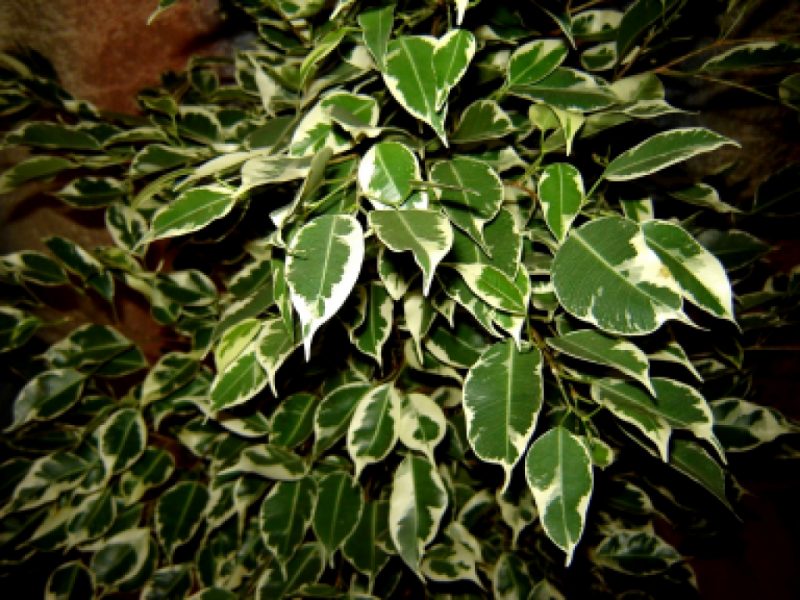
Caution! The critical minimum is 12 ° C.
The representative of the tropics needs a high level of humidity. In hot time, spraying is carried out daily with settled, soft water.
The absence of lime in it will avoid problems with traces on sheet plates. In winter, when the temperature drops, the procedure is not carried out.
Advice! As a hygienic water procedure, it is recommended to organize a warm shower every month for an exotic plant, which is also a preventive measure to combat pests such as aphids and spider mites.
Home care for Ficus Kinki is simple, but it is important to remember that he does not like frequent permutations. Therefore, the flower must immediately select a permanent place near the windows of the eastern or western directions, from where a large amount of bright soft light comes in, necessary to maintain the colorful colors of the leaves.
Attention! Ficus is a plant of long daylight, so in winter it should organize additional light sources in the form of fluorescent lamps.
Soil requirements

To ensure the splendor of the decorative and bright crown, it is necessary to choose the right substrate, which should have friability and good air and water permeability. To prepare the soil mixture, peat, turf land and sand are used in equal parts. In the absence of components or time for soil preparation, you can purchase a ready-made substrate for ficus, enriched with all the necessary nutrients, in a specialized store.
Watering and feeding
A competent watering regime is one of the key components that allows you to decorate the interior of a room with a beautiful and healthy plant. Humidification should be plentiful and regular. However, before each new portion of warm and standing water, it is necessary to control the moisture level of the earthen coma - the soil surface must have time to dry out on the 2 phalanges of the finger.
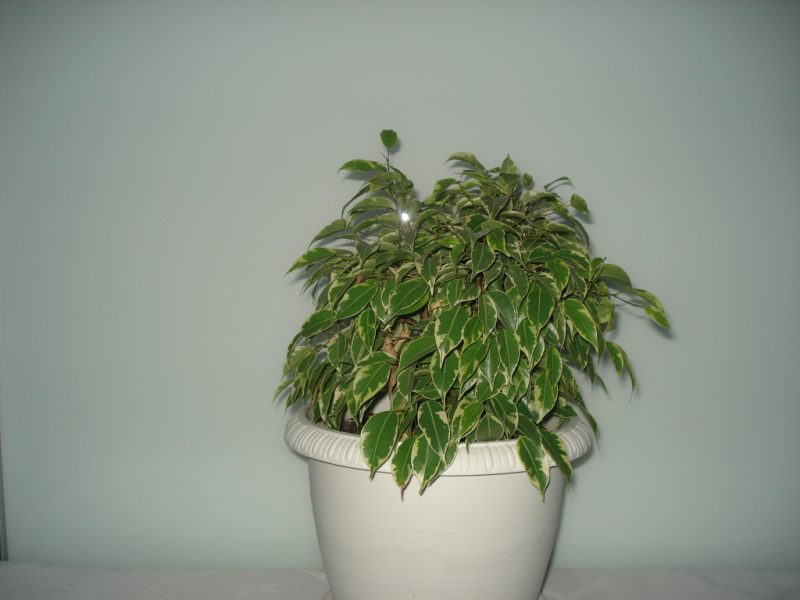
Dwarf ficus with variegated foliage needs systematic top dressing, which should include nitrogen in a lower concentration than for plain varieties. When organizing additional nutrition, it is necessary to be guided by the frequency of 2 to 3 times a month. In winter, top dressing ceases, unless the ficus is provided with long daylight hours and high temperatures. In such conditions, top dressing is carried out monthly in half concentration.
Cropping and shaping the crown
Pruning, which the Kinki ficus tolerates painlessly, is formative and, as a rule, is carried out in the spring. In autumn, it is possible to carry out sanitary and corrective pruning, in which patients are removed, damaged branches and shoots knocked out of the common crown are shortened.
To form a thick “cap” from variegated greens, several plants can be planted in one pot, which, interwoven, with age form a very decorative and fairly strong trunk that can withstand the weight of the green mass.
Plant transplant
The first transplant is carried out after the acquisition of culture, when the ficus underwent acclimatization. Subsequent procedures are carried out as the root system grows. A signal of incitement to action is the roots that appeared in the drainage holes.
The procedure is as follows:
- A ceramic or plastic pot is selected, the size of which will slightly exceed the root system of the plant.
- A drainage layer of gravel, expanded clay or fine broken brick is placed at the bottom.
- Then the ficus is transferred with the preservation of the old earth coma, which will reduce stress for the plant.
- The remaining space is filled with fresh substrate, which is slightly compacted and moistened.
Pest and Disease Control
Among the most common harmful organisms that are noted on the ficus are:
- Powdery MildewA fungal disease that develops intensively with excessive humidity. To combat it, you should resort to spraying with a fungicidal preparation and reduce humidity.
- Root rot. Excessive watering causes a disease that affects the roots, the diseased parts of which must be removed in order to fight. The flower needs to be transplanted into a fresh substrate.
- Spider mite, scutellum, aphids - sucking pests that attack the plant in low humidity. As a protective measure, the treatment of shoots with an insecticide is recommended.
Plant propagation
Ficus Benjamin Kinki at home propagated by vegetative methods, among which the most popular are cuttings and propagation by air layers.
Cuttings
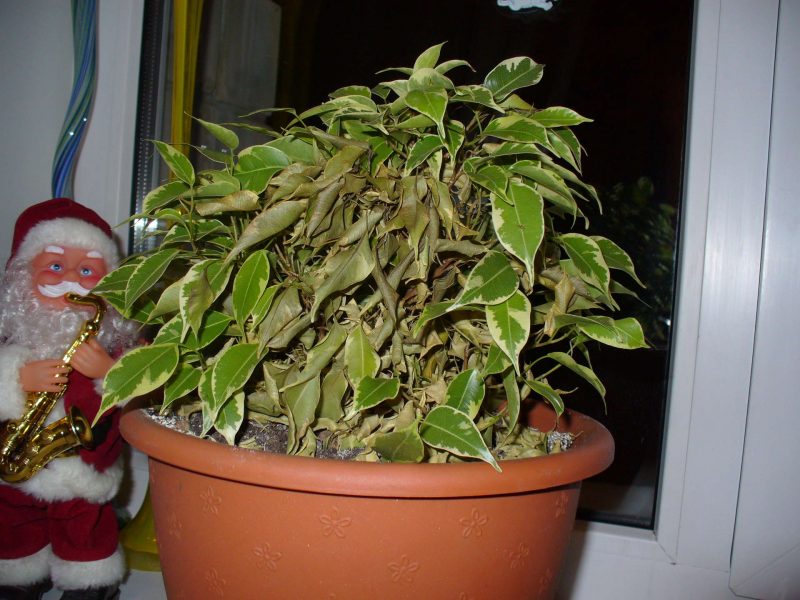
When the procedure is carried out in the spring - summer, the following manipulations are performed:
- Cuttings 10 cm long are prepared from apical shoots.
- Milky juice is washed off with water, after which the planting material is slightly dried in air.
- Cuttings 2 cm deep into the sandy peat substrate and covered with bottles.
- Periodically, caps are removed to ventilate and moisten the soil.
- When rooting occurs, as evidenced by new leaflets, young specimens are planted in individual containers.
Propagation by layering
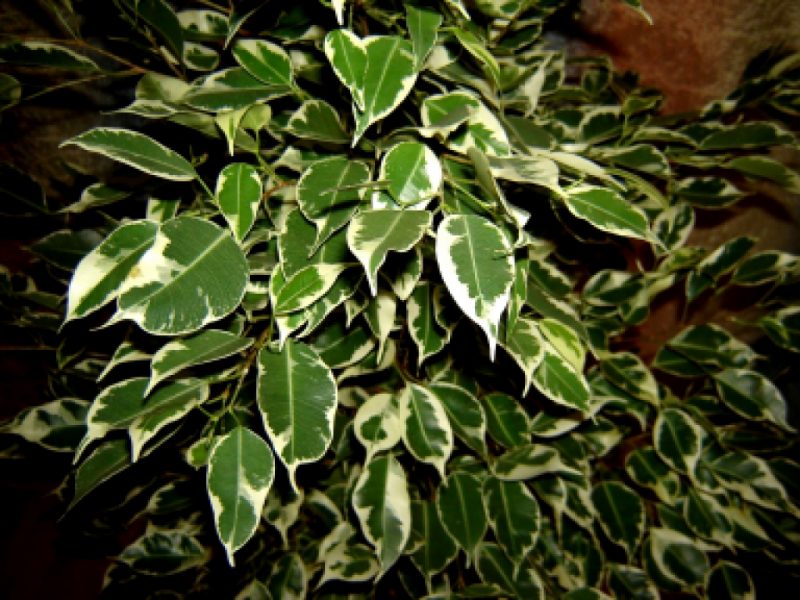
The method carried out in the summer season is ideal for rejuvenating the culture when:
- An incision is made in the circle of the shoot.
- The damaged area is wrapped with moistened moss and fixed with a film or thick adhesive tape, which helps to maintain the wet state of the sphagnum during root formation.
- When the moss is filled with airy roots, the shoot is cut off and planted in a prepared substrate.
What problems can the flower grower face?
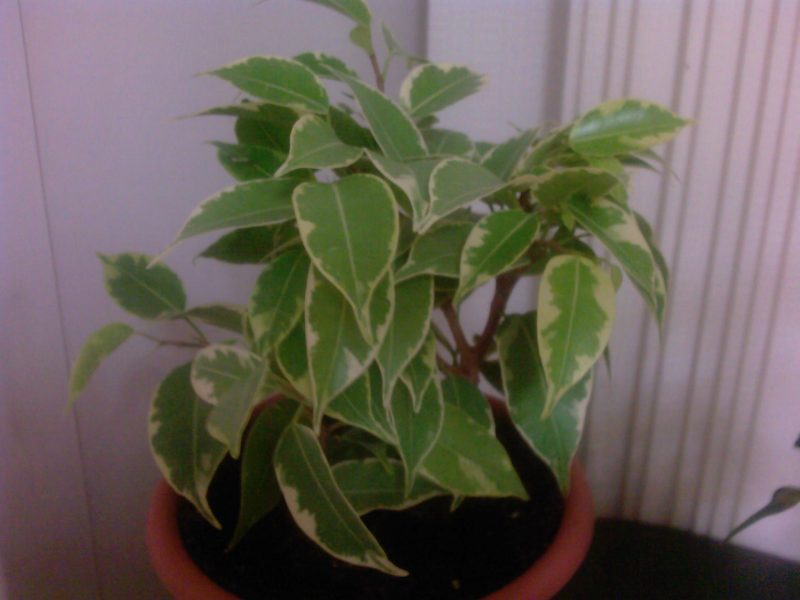
Violation of the basic requirements for the content of ficus in a room environment can cause a number of difficulties:
- Ficus Kinki discards leaves. The problem may be due to drafts, hypothermia at temperatures below 12 ° C, lack of lighting or excess nutrients in the substrate.
- Ficus leaves turn yellow. The difficulty is associated with a violation of the irrigation regime, in which the plant experiences stress and is susceptible to the development of harmful organisms.
Signs and Superstitions Associated with Ficus Kinki
In different nationalities, many signs and superstitions are associated with ficus, to believe in which or not, each person decides for himself.
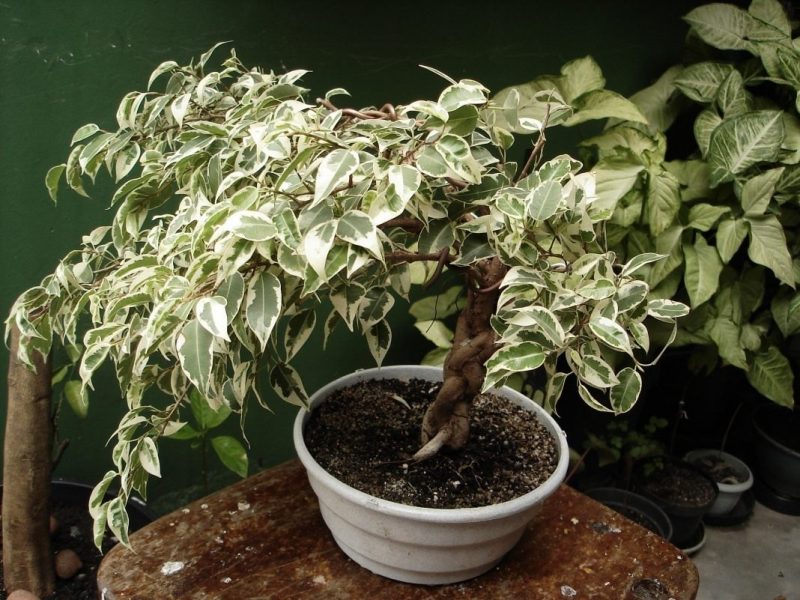
The most famous:
- Ficus nourishes the owner with vitality and vigor, so it is a wonderful gift.
- The plant drives away evil forces, possessing great strength and power.
- The representative of the tropical flora symbolizes the contention in the house and gives rise to gossip around the people living next to it.
- When placing a flower in the bedroom of the bride and groom, the formation of a new shoot promises the imminent appearance of the first-born.
So, the Kinki ficus is an ideal indoor plant that combines the beauty of form, the brightness of greenery and the low maintenance requirements.












